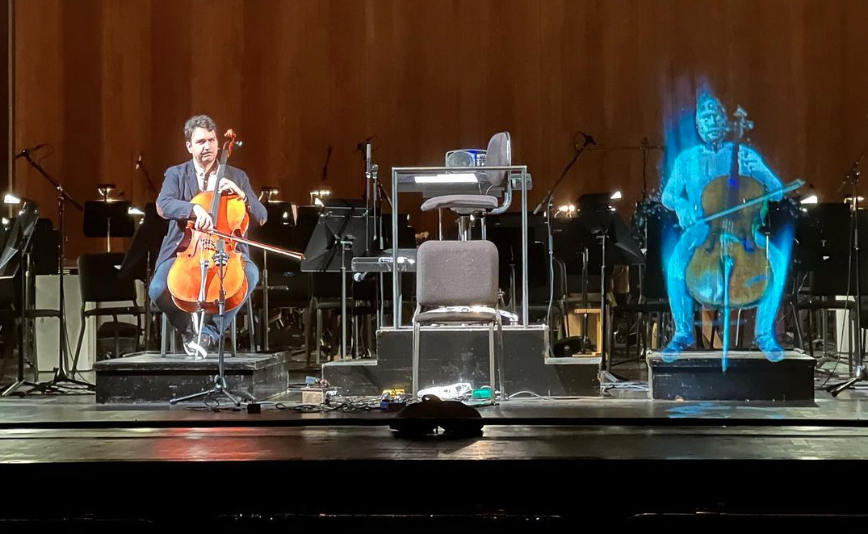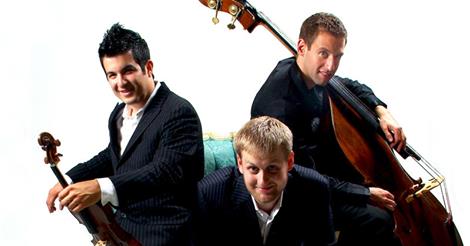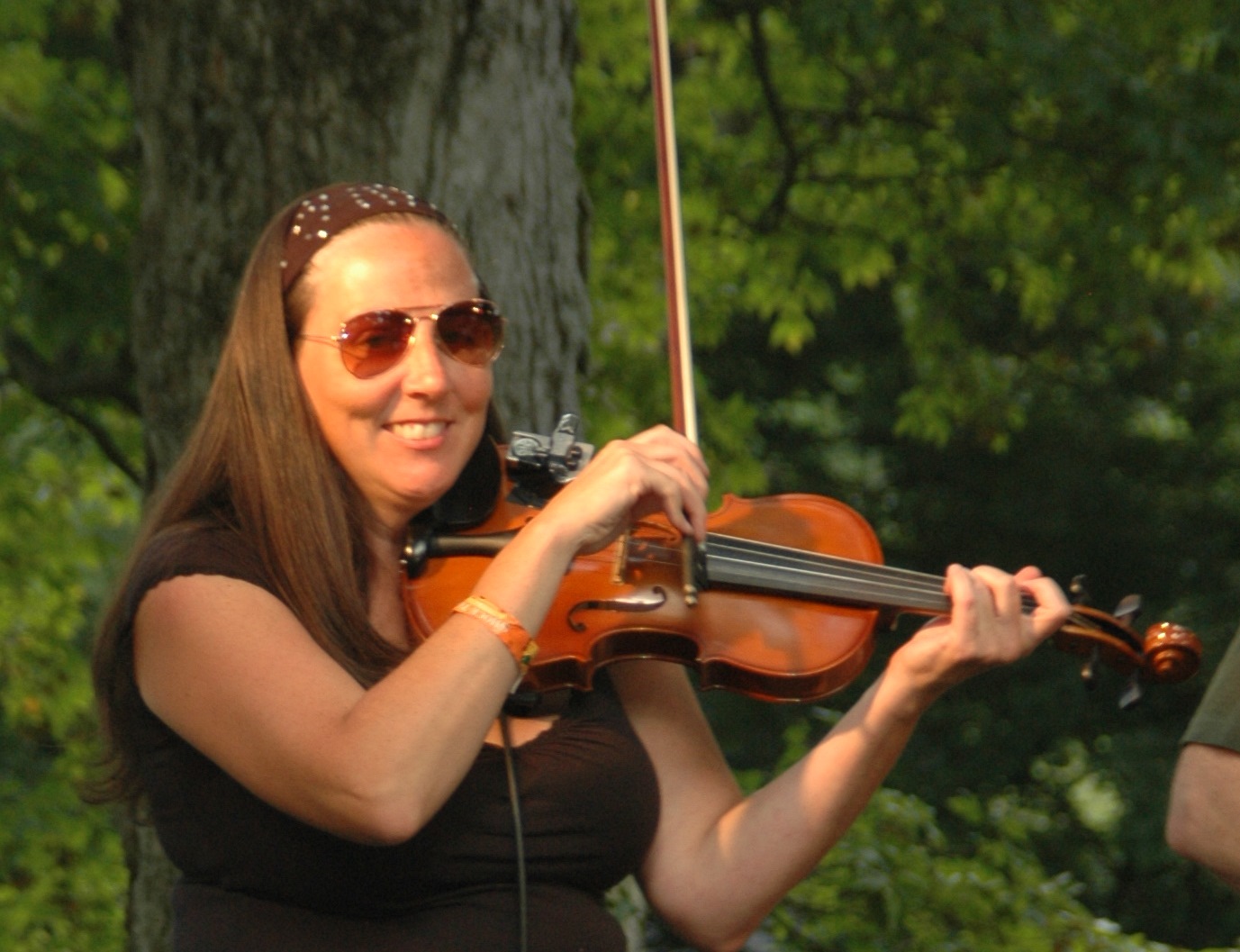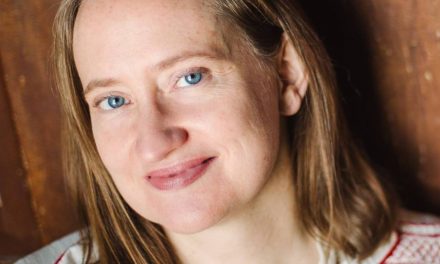Yves Dhar performing Adam Schoenberg’s Automation. Photo:Adamschoenbergmusic
Fantastique
Louisville Orchestra
Teddy Abrams, conductor
Yves Dhar, guest cellist
A review by Annette Skaggs
Entire contents are copyright © 2022 by Annette Skaggs. All rights reserved.
It could be said that the Louisville Orchestra was saving the best for last. Saturday evening’s concert was the finale of the 2021-2022 LO Classics Series and if you weren’t there, you missed something interesting. Not only did we get to experience the ever-lovely Symphonie fantastique, Op. 14 by Hector Berlioz, but we were also treated to two World Premieres: one by a young, up and coming local composer and one that uses an instrument that most of us had never heard of.
Let’s begin with the familiar: Fantastique. There is no question as to why this piece is a part of the orchestral canon since its debut in 1830 at the Paris Conservatory. Filled with lush themes, such as the idée fixe (fixed idea) and daring technical writing, the symphony’s name is appropriate.
Based upon an obsessive and unrequited love story of an imaginative young artist driven to the comfort of opium to help fill the void in his heart, Berlioz does a phenomenal job encapsulating the angst, agony, and euphoria that this poor artist experiences in the search for and unsuccessful engagement with the uninterested woman who is the center of his infatuation.
A symphony in five movements, Réveries, Passions, starts us off with a light and whimsical theme; one that expresses love and hope. In this movement, we are introduced to the recurring theme, that of the unobtained lover that drives our artist mad. The second movement is in the style of a waltz, hence named Un bal (A Ball). With a stunning harp duo that defines the motif, and then we move into the dance.
Upon the conclusion of Un bal Teddy needed to take a break and wipe his brow as the conducting work on this piece is indeed physical. But this was just a warm-up to what is to come.
The third movement, Scéne aux champs (Scene in the Country), is serene and pastoral. Based upon a conversation that the young artist hears between shepherds that are depicted by french horns and oboes, one of which was played within the wings of the audience by Alexandr Vvedensky. Unfortunately, I am not sure who the oboe and horn soloists were due to where I was seated, but I absolutely adored the conversation. I felt as if I was eavesdropping. And as that conversation was occurring the placement of the strings as the background was brilliant., especially in the violas. Another interesting aspect of the performance of this movement was the lighting, as the usually bright-ish gels were changed to warmer temperatures, giving the scene a calm glow.
Marche au supplice (March to the Scaffold) is dramatic, as the title would imply, and is perhaps the most familiar to most casual audiences and listeners. Filled with overriding themes that lend themselves to darkness and uncertainty, the instrumentation is dramatic and over the top, in the best way. The artist is in a stupor, having believed that he killed the target of his affection and thus destined for the guillotine. Within the pounding of the tom-toms and the rat-a-tat-tat of the snare drum, the listener is transported to the French Revolution. And while the percussion section is having their fun, the brass is alive and kicking too. I especially enjoyed a quick discussion that Teddy had with his brass section to pretty much let it all loose. And they did.
Upon this movement’s conclusion, there was a collective “Wow” from the audience. But there was one more section to go.
The final movement, Songe d’une nuit du sabbat (Dream of the Witches’ Sabbath) is wicked and dark but also has some similarities to writing styles of requiems. In fact, a leitmotif of the movement, played by the tuba, gave me pause to think that the theme from Stanley Kubrick’s film of The Shining bloomed from this piece. While watching I noticed that the woods and winds were giving each other playful looks, clearly enjoying themselves. We can hear the witches dancing in the syncopated notes from the brass and the young lover has met his fate in the end with woodwind trills and col legno strings.
And as exciting as Berlioz is, let’s delve into the World Premieres of the evening, beginning with local composer KiMani Bridges. Bridges has an extraordinary vision of music composition and in listening to this first orchestral piece, we could be hearing Ms. Bridges name for many years.
When Teddy introduced the piece, STATiC, he stated that it was a piece that actually made him laugh out loud, which is a rarity. In the program notes, the composer shares that the “…work moves between being still and having constant movement.” Can’t argue there.
It begins with a playing of the marimba so soft that if there is a noise of any kind in the concert hall you miss the tones, and unfortunately, that was the case on Saturday night. But, out of this virtual silence, comes a bit of a bombastic sound.
The piece is filled with almost indistinguishable themes as well as shouts from the instrumentalists, a la “Mambo”, except I could not understand the vocal expressions clearly other than what sounded like “Whoa” or “War”. And these vocal projections from the brass section came out of nowhere, perhaps written for extemporaneous use. And aside from a dip into vocalization, the composer delves into the abilities of an orchestral instrument and what instrument can serve in an orchestra. There aren’t too many works out there that require a pea whistle.
The program notes also shared “expect the unexpected and you will not be disappointed”. There were certainly unexpected moments, but amid the beautiful flute solo and the cacophony of sound, I was looking for the funny. Perhaps I was hearing a different story being told, that of controlled chaos, but engaging chaos.
While I may not have a theme to walk down the street with from STATiC, I do have a remarkable impression of what the future may sound like from the creative mind of KiMani Bridges. I hope to hear more, soon.
Humankind has been fearful for decades that machines are taking over. No, I don’t mean in a sci-fi/fantasy way, I mean in how we interact and create as humans for human consumption. This technology has even reached how we compose music. Many writers use software that is connected to their keyboards that when the notes are played, the software fills in the staff line. What a far cry from the days of 16×18 inch sheets of staff paper, filling in each quarter note and rest with a quill pen and inkwell.
Composer Adam Schoenberg, perhaps related to the other one you may be thinking about, wanted to put to task the use of creating music using Artificial Intelligence (AI). Here is where the sci-fi/fantasy may come into play,.
Mr. Schoenberg’s piece Automation is an experiment into what can be created by AI and humans working together. And if that doesn’t make your head swim, how about using a new instrument that only a handful of people know how to play, called the halldorophone.
A quick note about this instrument. Created by Halldor Úlfarsson, the instrument is electronic and cello-like and designed to feedback the strings, causing a deeper resonance in what the strings might normally sound like. While I had not heard of this instrument before Saturday evening, it was a central instrument in the soundtrack to the movie Joker. Having listened to what the halldorophone can do, I liken it to a cross between a cello and a Theremin.
Back to Automation.
Referencing the program notes, the composer describes Automation as a “Cinematic Concerto”. What he means is that in the presentation the audience is in the presence of both the human, that being guest soloist Yves Dhar and his holographic AI counterpart where they both interact on stage. This was certainly a first for me in seeing a hologram playing with an orchestra.
The composer asks “can a technically superior yet emotionless machine create music that moves us?” The short answer is a resounding YES!
I could go into much detail about the music that came from the Whitney Hall stage that night and speaks to the themes, one of which was a variation of the hymn “Tis a Gift to be Simple”, but I won’t. Instead, I will share that the first-class bowing and technical prowess of our guest artist Dr. Dhar on both cello and halldorophone was simply stunning, not to mention how exquisite our Louisville Orchestra sounded in what had to have been a bear of a piece of music to learn.
While the holograph was a very cool parlor trick and certainly had its place in the presentation of the work, I have to say that Automation is perhaps one of the best new pieces that have been performed by our Orchestra in many years. The piece was like a rollercoaster ride I didn’t want to end. Stunning from first note to last. I am still craving to hear more.
But, as the saying goes, all things must come to an end. And so, it goes with the last concert of the current season. One that will play in my mind for weeks to come. On the bright side, there are some lovely concerts just on the horizon and I can’t wait for what’s to come.
Oh, congratulations to piccolo player Don Gottlieb, who is retiring after over 30 years with the Louisville Orchestra. Hopefully, we’ll see you come back every now and then. The playing of Stars and Stripes, Forever wouldn’t be the same without your piccolo.
Bravi Tutti!!!
Fantastique
May 14, 2022
Louisville Orchestra
Kentucky Performing Arts
501 West Main Street
Louisville, KY 40202
Louisvilleorchestra.org
Annette Skaggs is heavily involved as an Arts Advocate here in Louisville. She is a freelance professional opera singer who has performed throughout Europe and in St. Louis, Cincinnati, Boulder, Little Rock, Peoria, Chicago, New York and of course Louisville. Aside from her singing career, she has been a production assistant for Kentucky Opera, New York City Opera, and Northwestern University. Her knowledge and expertise have developed over the course of 25+ years’ experience in the classical arts.





